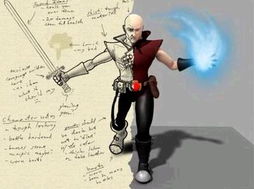
Game design is an art form that combines creativity, technology, and storytelling to create immersive experiences for players. As the gaming industry continues to grow, the role of a game designer has become increasingly significant. This article explores the basics of game design, its importance, and the skills required to excel in this field.

A game designer is responsible for the overall concept, gameplay, and narrative of a game. They work closely with artists, programmers, and other team members to bring their vision to life. Key responsibilities include:
Conceptualizing the game's story and world
Designing gameplay mechanics and rules
Creating characters and environments
Collaborating with artists and programmers to implement designs

Game design is crucial to the success of a game. A well-designed game can provide hours of entertainment, challenge players, and create memorable experiences. Here are some reasons why game design is important:
Engagement: A well-designed game can keep players engaged for extended periods, encouraging them to return for more.
Innovation: Game designers push the boundaries of what is possible in the gaming world, leading to new and exciting experiences.
Storytelling: Games have the power to tell compelling stories, allowing players to connect with characters and themes in unique ways.
Community: Game design can foster a sense of community among players, as they share their experiences and achievements.

Successful game designers possess a diverse set of skills, including:
Creativity: The ability to think outside the box and come up with innovative ideas is essential.
Technical Skills: Familiarity with game development software and programming languages can be beneficial.
Communication: Game designers must be able to effectively communicate their ideas to team members and stakeholders.
Problem-Solving: The ability to identify and solve problems that arise during the game development process is crucial.
Storytelling: A strong understanding of narrative and the ability to create engaging stories is important.

The game design process involves several stages, including:
Conceptualization: Brainstorming ideas and defining the game's core concept.
Design Document: Writing a detailed document outlining the game's mechanics, story, and other elements.
Prototyping: Creating a basic version of the game to test and refine its mechanics.
Iteration: Revising the game based on feedback and testing results.
Finalization: Finalizing the game's design and preparing for development.

The gaming industry is constantly evolving, and game design is no exception. New technologies, such as virtual reality (VR) and augmented reality (AR), are opening up new possibilities for game designers. As the industry continues to grow, the demand for skilled game designers will likely increase, making it an exciting field to pursue.

Game design is a dynamic and rewarding field that requires a combination of creativity, technical skills, and storytelling abilities. As the gaming industry continues to expand, the role of the game designer will become increasingly important. By understanding the basics of game design and developing the necessary skills, aspiring game designers can create immersive experiences that captivate players around the world.
